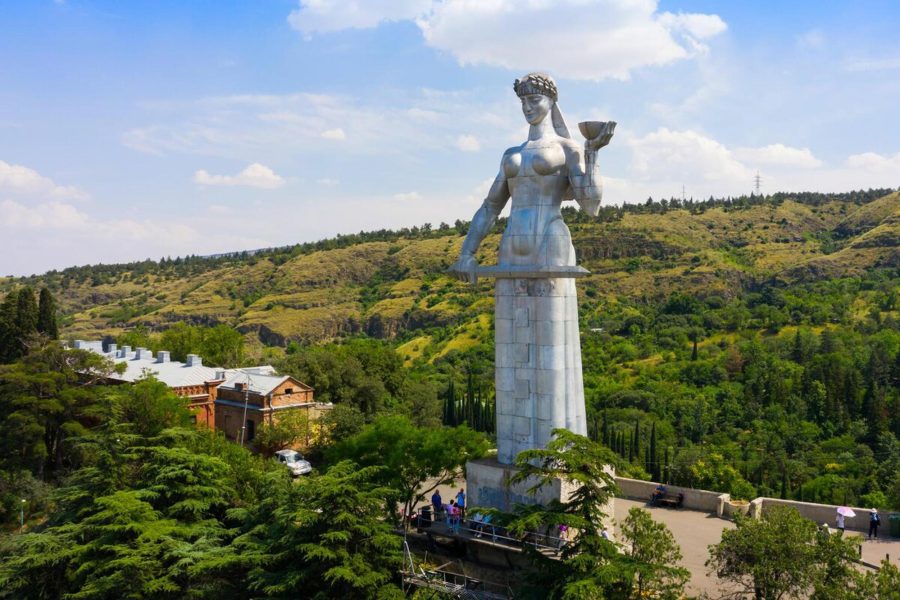Dris Fortress: The Cliffside Guardian of the Mtkvari
Clinging dramatically to a rocky cliff overlooking the Mtkvari River, Dris Fortress is a stunning and atmospheric ruin for the dedicated explorer. Also known locally as Javakhishvili’s Fortress, this medieval stronghold once controlled a strategic bend in the river and the road that ran alongside it. Its multi-layered ruins, which include a church, a tower, and palace remnants, speak of a once-thriving feudal center.
The story of Dris Fortress is deeply intertwined with the powerful feudal families of Shida Kartli. Its strategic location made it an important defensive post and a residence for local lords. From this vantage point, they could monitor all movement along the river, a vital artery of trade and military transit. The fortress has seen centuries of conflict and has been rebuilt and modified over time, with each layer adding to its rich history.
The hike up to Dris Fortress is a rewarding challenge. The path is steep, but as you ascend, the views of the Mtkvari valley become increasingly spectacular. Upon reaching the summit, you are greeted by a complex of ruins that beg to be explored. You can wander through the remains of the main citadel, discover the small St. George’s church nestled within the walls, and climb the watchtower for the most breathtaking panorama.
This is a wild and untamed historical site. Nature is slowly reclaiming the stones, creating a romantic and picturesque scene. It’s a place that fires the imagination, allowing you to step back in time and picture the lives of the soldiers and nobles who inhabited this formidable eagle’s nest. For those willing to make the climb, Dris Fortress offers an unforgettable encounter with Georgia’s raw medieval past.
🗺️ Geography & Location
Exact Location:
The fortress is located on a high, rocky cliff on the left bank of the Mtkvari River, near the village of Dris in Kaspi Municipality.
Strategic Placement:
It held complete control over a significant portion of the Mtkvari valley and the ancient road that passed through it, making it a key strategic point.
Coordinates:
Approximately 41.9700° N, 44.4083° E.
📖 History & Background
Date of Construction & Origins:
A medieval fortress complex with layers of construction dating from the 11th to the 18th centuries.
Historical Role:
It served as a major feudal residence and stronghold, likely for the Javakhishvili noble family.
Status:
A cultural heritage monument of national significance, preserved as ruins.
🏗️ Architecture & Design
Materials Used:
Built from local stone, expertly integrated with the natural cliff face.
Key Features:
- Multi-component complex: Includes a citadel, a watchtower, the ruins of a palace, and a functioning St. George’s Church.
- Cliffside Integration: The fortress is a prime example of defensive architecture that uses the natural terrain as its primary defense.
Unique Aspects:
Its picturesque location on the Mtkvari cliff and the presence of a well-preserved church within the ruined walls make it a particularly beautiful and interesting site.
🌟 Cultural & Tourist Significance
Hiker’s Destination:
The challenging but rewarding hike makes it a popular destination for adventurers and photographers.
A Layered History:
The different structures within the fortress offer a glimpse into the military, residential, and spiritual life of a medieval Georgian feudal center.
🚶 How to Visit
Best Time of Year to Visit:
Spring and autumn are the best times for the hike, offering pleasant weather and clear views.
Accessibility:
Difficult. It requires a steep and strenuous hike from the valley floor. Visitors need to be in good physical condition and wear appropriate footwear.



Leave a review